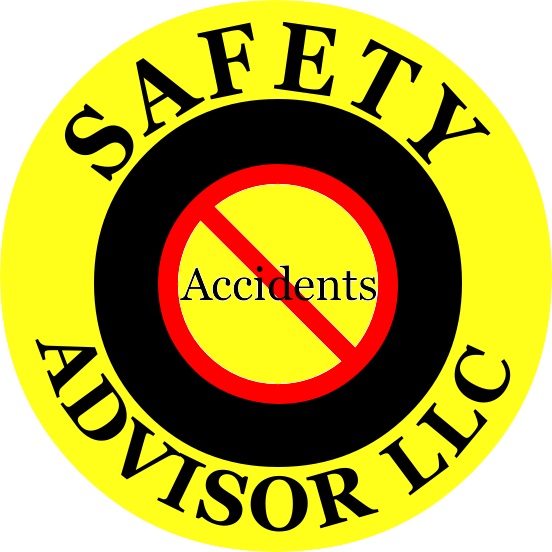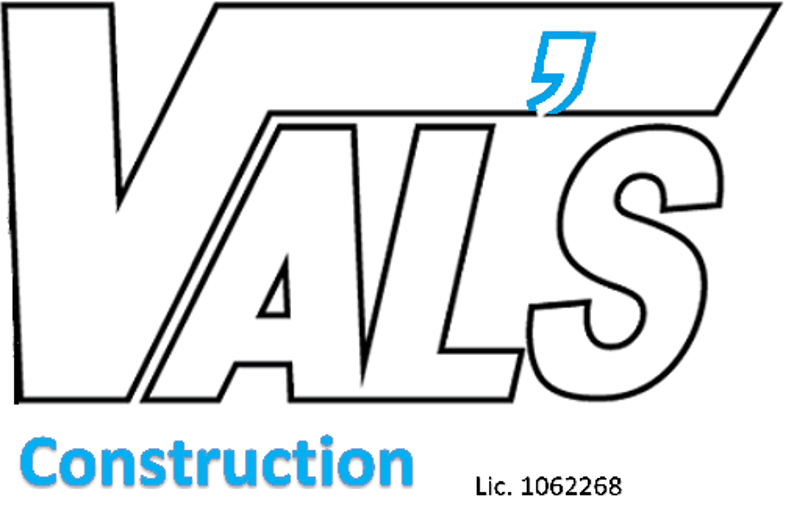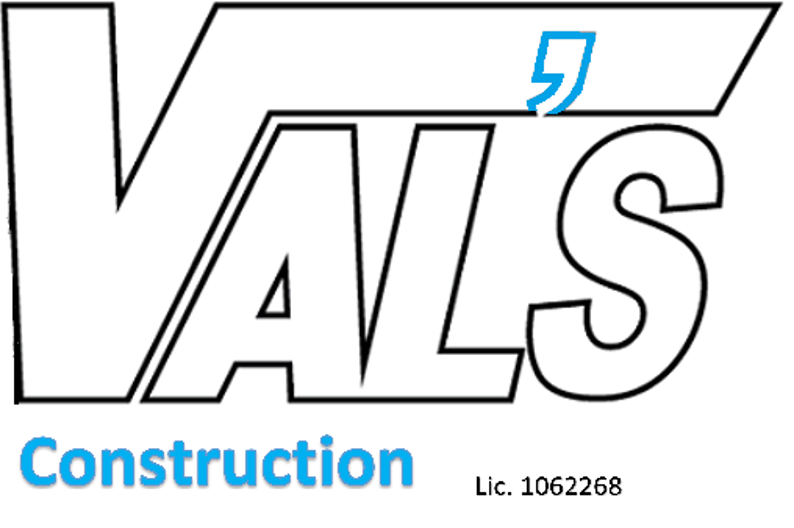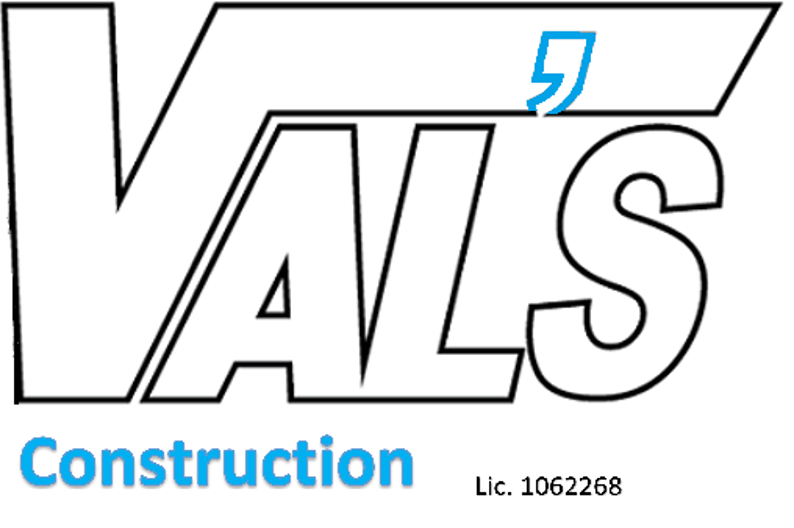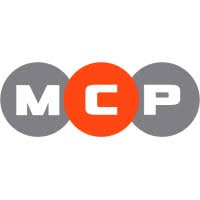Information
-
Document No.
-
Audit Title
-
Client / Site
-
Conducted on
-
Prepared by
Aerial/Boom Lifts
-
Workers tied off to boom or basket? (1926.453)
-
Operator(s) trained and/or authorized? (1926.453)
-
Both feet on floor of basket when not tied off? (1926.453)
-
Boom/basket load limits not exceeded? (1926.453)
-
Aerial lift stationary when elevated? (1926.453)
-
Aerial lift controls clearly marked/identified? (1926.453)
-
Aerial lifts inspected daily/prior to use? (1926.453)
-
Access gate/opening closed when working in lift? (ANSI/SIA A92.5)
-
Operated on level surface per equipment specs? (ANSI/SIA A92.5)
-
Outriggers (when available) utilized as needed? (ANSI/SIA A92.5)
-
Work platform kept reasonably clear of debris? (ANSI/SIA A92.5)
-
Good compliance/no safety violations? (1926.453)
-
Comments
Behaviors
-
Eyes on path/looks in direction of travel?
-
Looks back when stepping backwards?
-
Pushes instead of pulls when possible?
-
Avoids overhead work when possible?
-
Lifts with legs not back when possible?
-
Forms a bridge with free hand when lifting?
-
Does not lift more than one can lift safely?
-
Keeps load close to body when lifting?
-
Uses lift assist device for heavy loads?
-
Avoids lifting unstable loads?
-
Does not subject coworker(s) to injury?
-
Works at safe pace/not rushed?
-
Comments:
Concrete/Masonry
-
Rebar guarded to eliminate impalement hazard? (1926.701)
-
Workers avoid working under buckets? (1926.701)
-
Troweling machines equipped with auto shut-off? (1926.702)
-
Handles on concrete buggy within wheel width? (1926.702)
-
Connectors used to secure pressurized air hoses? (1926.702)
-
Safety latches prevent accidental dumping of buckets? (1926.702)
-
Bull float handles nonconductive or insulated? (1926.702)
-
Masonry saw blades guarded? (1926.702)
-
Formwork capable of supporting vertical/lateral loads? (1926.703)
-
Shoring equipment inspected? (1926.703)
-
Base plates secured to foundation/formwork? (1926.703)
-
Jacks/supports do not exceed rated capacity? (1926.703)
-
Rebar adequately supported to prevent collapse? (1926.703)
-
Precast supported until permanent connections made? (1926.704)
-
Lifting inserts on tilt-up precast support 2x max. load? (1926.704)
-
Lifting inserts on precast (non-tilt-up) support 4x max. load? (1926.704)
-
Lifting hardware able to support 5x max. load? (1926.704)
-
Only erectors allowed under precast when lifted/tilted (1926.704)
-
Jacking synchronized to ensure level/uniform lifting? (1926.705)
-
Maximum jacks per slab does not exceed 14? (1926.705)
-
Temporary connections secured by tack welding? (1926.705)
-
Limited access zone equal to wall height plus 4 feet? (1926.706)
-
Limited access zone strictly enforced? (1926.706)
-
Walls over 8 feet braced to prevent collapse? (1926.706)
-
Good compliance/no safety violations? (Subpart Q)
-
Comments
Confined Space
-
Survey completed to identify hazards of PRCS? (ANSI Z117.1 Sec. 3)
-
Permit completed and signed for all PRCS entries? (ANSI Z117.1 Sec. 5)
-
Proper atmospheric testing in place? (ANSI Z117.1 Sec. 6)
-
Attendant on duty outside the permit space? (ANSI Z117.1 Sec. 7)
-
Attendant(s)/entrant(s) in constant communication? (ANSI Z117.1 Sec. 7)
-
Hazardous energy sources isolated/locked out? (ANSI Z117.1 Sec. 8)
-
Ventilation provided as required? (ANSI Z117.1 Sec. 9)
-
Proper PPE worn during entry as required? (ANSI Z117.1 Sec. 11)
-
Appropriate retrieval equipment in use? (ANSI Z117.1 Sec. 12)
-
Barricades provided at entrance as needed? (ANSI Z117.1 Sec. 12)
-
Signage placed at entrance of PRCS as required? (ANSI Z117.1 Sec. 13)
-
Emergency response plan developed/in place? (ANSI Z117.1 Sec. 14)
-
Personnel trained and documented? (ANSI Z117.1 Sec. 15 and 1926.21)
-
Good compliance/no safety violations? (ANSI Z117.1)
-
Comments:
Cranes/Rigging
-
Crane inspected/operated per manufacturer requirements? (1926.1417)
-
Workers kept clear of suspended loads? (1926.1425)
-
Ground conditions adequate to support crane? (1926.1402)
-
Power line safety requirements followed? (1926.1407-.1411)
-
Radius guard installed on crane? (1926.1424)
-
Crane load capacities/operator manual in cab? (1926.1417)
-
Hand signal chart available? (1926.1422)
-
Fire extinguisher located in cab? (1926.1433)
-
Rigging equipment inspected/good condition? (1926.251)
-
Lift capacities marked on rigging equipment? (1926.251)
-
Crane operator(s) meet certification requirements? (1926.1427)
-
Only qualified riggers allowed to rig loads? (1926.1425)
-
Signal person(s) trained, qualified and authorized? (1926.1428)
-
Adequate communication between signal person & operator? (1916.1419)
-
Anti two-blocking device inspected/functional? (1926.1416)
-
Good compliance/no safety violations? (Subpart CC)
-
Comments:
Demolition
-
Engineering survey completed, available for review? (1926.850)
-
Structure shored/braced if damaged by fire/flood/etc.? (1926.850)
-
Utilities shut off or controlled outside the building? (1926.850)
-
Glass fragmentation hazards removed? (1926.850)
-
Wall openings protected to height of 42 inches? (1926.850)
-
Debris landing area (w/o chutes) barricaded 6 ft. back? (1926.850)
-
Warning signs for falling material posted each level? (1926.850)
-
Non-debris floor openings properly guarded? (1926.850)
-
Entrances guarded 8 ft. out on multi-story building? (1926.850)
-
Stairs/passageways/ladders in clean & safe condition? (1926.851)
-
Debris landing area outside building protected? (1926.852)
-
Chute openings closed when not in use? (1926.852)
-
Chute openings do not exceed 48 in. in height? (1926.852)
-
Chute openings protected by guardrail? (1926.852)
-
Gate installed at chute discharge and monitored? (1926.852)
-
Discharge chute closed off when operations cease? (1926.852)
-
Space between chute and structure covered? (1926.852)
-
Bumper 4 in. thick/6 in. high at chute opening? (1926.852)
-
Floor openings curbed when equipment in use? (1926.856)
-
Periodic inspections made by competent person? (1926.859)
-
Good compliance/no safety violations? (Subpart T)
Electrical Safety
-
Equipment installed/used as listed or labeled? (1926.403)
-
Extension cords have ground pin? (1926.404)
-
GFCI used for temporary power connections? (1926.404)
-
Extension cords not worn/frayed? (1926.416)
-
Light bulbs protected from accidental breakage? (1926.405)
-
All sockets in temporary lighting have bulbs? (1926.416)
-
Temporary lights not suspended by electric cords? (1926.405)
-
Breakers/switches legibly marked to indicate purpose? (1926.403)
-
Cords protected/kept clear of work areas or walkways? (1926.416)
-
Employees avoid working near unprotected energized circuits? (1926.416)
-
Deenergized circuits locked or tagged out? (1926.417)
-
Signs posted restricting access to locations w/exposed live parts? (1926.403)
-
Electrical panels/circuits effectively enclosed? (1926.405)
-
Proper clearance (3 feet) maintained in front of panels? (1926.403)
-
Conductors entering boxes/cabinets protected from abrasion? (1926.405)
-
Good compliance/no safety violations? (Subpart K)
-
Comment
Exits/Egress
-
Exits available and free of obstructions? (1926.34)
-
Exits and access to exits marked with signs? (1926.34)
-
Comment
Fall Protection
-
Fall protection provided when working above 6 feet? (1926.501)
-
Steps taken to prevent falling object hazards? (1926.501)
-
Covers/barricades prevent workers from falling through holes? (1926.501)
-
Guardrails installed/maintained in good condition? (1926.502)
-
Top and mid-rail in place and at proper height? (1926.502)
-
Guardrails able to withstand 200 lb. force? (1926.502)
-
Toeboards erected to prevent falling objects? (1926.502)
-
Guardrail posts not more than 8 feet OC? (Subpart M App. B)
-
Harnesses maintained in good condition? (1926.502)
-
Harnesses worn/fitted properly? (1926.503)
-
Lanyards in good condition/no defects? (1926.502)
-
Suitable anchorage provided for fall arrest system? (1926.502)
-
PFA used/worker connected as required? (1926.501)
-
PFA rigged to prevent contact with lower surface? (1926.502)
-
PFA rigged to limit free fall to no more than 6 ft? (1926.502)
-
PFA not attached to guardrail system? (1926.502)
-
Safety monitor used when fall arrest/restraint not utilized? (1926.501/.502)
-
Safety monitor performs only monitoring duties? (1926.502)
-
Safety monitor same surface with visual/oral contact? (1926.502)
-
Floor hole covers secured, substantial, marked? (1926.502)
-
Warning line 6 feet back for roofing activities? (1926.502)
-
Warning line 15 ft. back for non-roofing activities? (OSHA Interp Letter)
-
Warning line erected on unprotected roof edge? (1926.502)
-
Warning line flagged and suspended at proper height? (1926.502)
-
Hoisting area adequately guarded? (1926.502)
-
Workers trained on recognizing/minimizing fall hazards? (1926.503)
-
Fall Protection training certified/documented? (1926.503)
-
Good compliance/no safety violations? (Subpart M)
-
Comment
Fire Safety
-
Fire extinguishers in good condition/fully charged? (1926.150)
-
Fire extinguishers inspected annually? (1926.150)
-
Travel distance to fire extinguisher within 100 feet? (1926.150)
-
Fire extinguisher within 50 ft. of flammables? (1926.150)
-
Minimum one fire extinguisher per floor? (1926.150)
-
Approved/UL listed fire extinguishers provided? (1926.150)
-
Fire extinguishers conspicuously located? (1926.150)
-
Flammables stored in approved/closed containers? (1926.152)
-
Smoking prohibited where fire hazard exists? (1926.151)
-
Scrap piles no closer than 10 ft. from buildings? (1926.151)
-
Flammable liquids protected from ignition sources? (1926.152)
-
Flammable not stored near emergency pathways? (1926.152)
-
Fire extinguisher kept near gas powered equipment? (Best Practice)
-
Good compliance/no safety violations? (Subpart F)
-
Comment
Forklifts
-
Forklifts inspected daily? (1910.178)
-
Forklifts free of known defects/damage? (1910.178)
-
Forklift operators trained/certified? (1910.178)
-
Forklift operators evaluated every 3 years? (1910.178)
-
No modifications affecting lift capacity? (1910.178)
-
Forks lowered when truck is unattended? (1910.178)
-
Nameplate/markings in place and legible? (1910.178)
-
Seatbelts worn on sit down rider trucks? (1910.132)
-
Comment
Fueling Operations
-
Dispensing unit protected against vehicle damage? (1926.152)
-
No Smoking signs in fuel dispensing area? (1926.152)
-
Motors shut off during fueling operation? (1926.152)
-
Fire extinguisher within 75 ft of fueling area? (1926.152)
-
Fueling area free of combustibles? (1926.151)
-
Tank(s) secured during off-work hours? (Best Practice)
-
Dispensing nozzle automatic-closing type? (1926.152)
-
Fuel tanks properly labeled? (NFPA 30)
-
Spill control means/method provided? (1926.152)
-
Good compliance/no safety violations? (1926.152)
-
Comment
Hazard Communication
-
SDS for hazardous chemicals readily available? (1910.1200)
-
Hazardous chemicals properly labeled? (1910.1200)
-
Chemical inventory list maintained? (1910.1200)
-
Training completed/workers demonstrate competency? (1910.1200)
-
GHS training completed by Dec. 1, 2013? (1910.1200)
-
Good compliance/no safety violations? (1910.1200)
-
Comments
Health
-
Noise exposures monitored/controlled? (1926.52)
-
Asbestos exposures monitored/controlled? (1926.1101)
-
CO exposures monitored/controlled? (1926.55)
-
Lead exposures monitored/controlled? (1926.62)
-
Silica exposures monitored/controlled? (1926.55)
-
Welding fume exposures monitored/controlled? (1926.353)
-
Extreme heat exposures monitored/controlled? (5a1)
-
Extreme cold exposures monitored/controlled? (5a1)
-
Comments
Housekeeping
-
Worksite reasonably organized/good housekeeping? (1926.25)
-
Combustible scrap/debris removed at regular intervals? (1926.25)
-
Job trailer clean and reasonably organized? (Best Practice)
-
Material staging area kept reasonably organized? (1926.25)
-
Containers used for oily/flammable waste covered? (1926.25)
-
Gang box(es) reasonably clean and organized? (Best Practice)
-
Garbage disposed of at frequent/regular intervals? (1926.25)
-
Loose scrap/light materials susceptible to wind secured? (5A1)
-
Good compliance/no safety violations? (1926.25)
-
No protruding nails on unused lumber? (1926.25)
Comments
Ladders/Stairs
-
Ladders inspected/no visible defects? (1926.1053)
-
Side rails extend 3 feet above landing surface? (1926.1053)
-
Ladders set up at 4:1 angle? (1926.1053)
-
Ladders set up on stable/level surface? (1926.1053)
-
Side rails secured (as needed) to prevent side slip? (1926.1053)
-
Base of ladder secured when conditions warrant? (1926.1053)
-
Ladders used for intended purpose? (1926.1053)
-
Stairs/ladder/ramp at elevation break of 19+ inches? (1926.1051)
-
Handrails on stairs with 4 or more risers? (1926.1052)
-
Spreaders fully engaged on stepladders? (1926.1053)
-
Top 2 steps of stepladder not used? (1926.1053)
-
Area at top and bottom of ladder kept clear? (1926.1053)
-
At least one hand free to grasp ladder? (1926.1053)
-
Treads/landings on pan stairways filled? (1926.1052)
-
Good compliance/no safety violations? (Subpart X)
-
Comments
Mechanized Equipment
-
Equipment in good condition/no obvious defects? (1926.601)
-
Seat belts provided on equipment with ROPs? (1926.602)
-
Seat belts worn on equipment with ROPs? (1926.28)
-
Parking brake set when equipment is parked? (1926.600)
-
Wheels chocked when parked on incline? (1926.600)
-
Bidirectional machines equipped with functional horn? (1926.602)
-
Reverse alarm and/or spotter when backing? (1926.601-602)
-
No passengers allowed on single-operator equipment? (1926.601)
-
Windshields in good condition/no cracks? (1926.601)
-
Personnel platform secured to carriage/forks? (1926.602)
-
Personnel on raised platform have access to operating controls? (1926.602)
-
Beacon light activated on equipment when conditions warrant? (Best Practice)
-
Slow Moving Vehicle placard when operating in traffic? (MUTCD)
-
Blades/buckets/dump bodies lowered or blocked when not in use? (1926.600)
-
Operator(s) competent/familiar with equipment controls? (1926.20)
-
Equipment/attachments at safe distance from energized power lines? (1926.602)
-
Good compliance/no safety violations? (Subpart O)
-
Comments
Medical/FA Services
-
First aid supplies easily accessible when required? (1926.50)
-
First aid supplies refilled/maintained? (1926.50)
-
Certified FA provider available at remote worksites? (1926.50)
-
Emergency numbers posted when 911 service unavailable? (1926.50)
-
Location of nearest medical facilities known/posted? (1926.50)
-
Eye/body flushing facilities available when needed? (1926.50)
-
Eye wash station(s) properly maintained? (ANSI Z358.1)
-
Good compliance/no safety violations? (1926.50)
Comments
Personal Protective Equipment
-
PPE provided/used as required? (1926.95)
-
PPE maintained in good condition? (1926.95)
-
Replacement PPE readily available? (Best Practice)
-
Eye protection used as required? (1926.102)
-
Hard hats worn as required? (1926.100)
-
Hand protection worn when needed? (1926.28)
-
Safety footwear worn as needed? (1926.28)
-
Respirators provided/used as required? (1926.103/1910.134)
-
Workers reviewed App D/voluntary dust mask use? (1910.134)
-
Hearing protection used as required? (1926.52)
-
High-visibility clothing worn as required? (1926.28)
-
Face protection used when required? (1926.102)
-
PFD worn when working over/near water? (1926.106)
-
Good compliance/no safety violations? (Subpart E)
-
Comments
Postings/Safety Signs
-
OSHA Workplace Poster displayed? (1903.2)
-
Emergency numbers/contacts posted? (Best Practice)
-
OSHA 300 Summary posted Feb. 1st to Apr. 30th? (1904.32)
-
Danger/caution signs posted as needed? (1926.200)
-
Warning signs around perimeter of worksite? (Best Practice)
-
Good compliance/no safety violations?
-
Comments
Public Protection
-
Public warned of potential for sudden/loud impact noises? (3.2.1.1)
-
Public exposure to airborne contaminants (dust/fumes/smoke) controlled? (3.2.2)
-
Construction operations near pedestrian/vehicular traffic controlled? (3.2.3)
-
Where pedestrian areas are closed, suitable and safe alternatives provided?<br>(3.2.4.1)
-
Lighting (including welding flash) directed/shielded to minimize impact on public?<br>(3.2.5)
-
Radiation exposure hazards controlled and shielded to protect public? (3.2.6)
-
Areas where public is exposed to mobile equipment are barricaded/guarded? (3.2.7.2)
-
Barriers, enclosures, netting used to protect public from falling/wind-borne objects? (3.2.8)
-
Measures taken to restrict public access to jobsite? (3.2.9)
-
Measures taken to restrict public access to hazardous equipment/supplies? (3.2.9.1)
-
Operations generating waste/debris controlled to minimize exposure to adjacent areas? (3.2.10)
-
Controls in place where water run-off may pose a pollution hazard? (3.2.10.2)
-
Utilities located and marked prior to start of construction? (3.2.11)
-
Hazardous materials stored away from public in approved/labeled containers or structures? (3.2.12)
-
Hazards associated with vibrations (pile driving, blasting, etc.) analyzed? (3.2.14)
-
When blasting occurs, an audible warning signal is established to warn public? (3.2.14.3)
-
Excavations/trenches in public areas backfilled as soon as practicable? (3.2.14.5)
-
Personnel trained on action to take if emergency arises affecting public? [3.3.1]
-
Comments
Safety Training
-
Toolbox talks completed daily? (1926.21)
-
Toolbox talks completed weekly? (1926.21)
-
Toolbox talks documented? (Best Practice)
-
-
Equipment/machine operator training documented? (Best Practice)
-
Job-specific safety training provided/documented? (OSHA Pub. 2254)
-
Safety Orientation Training provided? (OSHA Pub 2254)
-
Good compliance/no safety violations? (1926.20-.21)
-
Comments
Sanitation
-
Adequate supply of potable water provided? (1926.51)
-
Common drinking cup prohibited? (1926.51)
-
Non-potable water outlets clearly marked? (1926.51)
-
1 toilet per 20 workers when fewer than 20 at jobsite? (1926.51)
-
1 toilet/urinal per 40 workers when more than 20 at jobsite? (1926.51)
-
1 toilet/urinal per 50 workers when more than 200 at jobsite? (1926.51)
-
Port-a-Johns kept in clean and sanitary condition? (Best Practice)
-
Washing facilities for employees exposed to harmful contaminants? (1926.51)
-
Washing facilities maintained in a sanitary condition? (1926.51)
-
Food/beverage consumption prohibited in toxic/hazardous areas? (1926.51)
-
Good compliance/no safety violations? (1926.51)
-
Comments
Scaffolds (Rolling/Baker)
-
Scaffolds inspected/free of defects? (1926.451)
-
Working platforms fully planked/decked? (1926.451)
-
Platform clean/free of excessive debris? (1926.451)
-
Fall protection provided above 10 feet? (1926.451)
-
Scaffolds and components do not exceed rated capacities? (1926.451)
-
Employee remains within wheels/supports of scaffold? (1926.452)
-
Scaffold bracing is secured, squared, aligned? (1926.452)
-
Wheel/caster brakes operable and set as required? (1926.452)
-
Caster/wheel stems pinned/secured to scaffold legs? (1926.452)
-
Employee only rides scaffold if surface is level/no obstructions? (1926.452)
-
Outriggers used when platform extends beyond supports? (1926.452)
-
Outriggers (if required) properly installed? (1926.452)
-
Workers trained on use of scaffolds? (1926.454)
-
Comments
